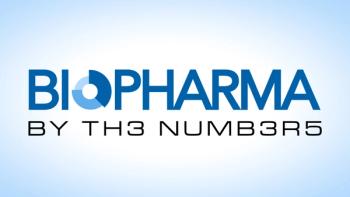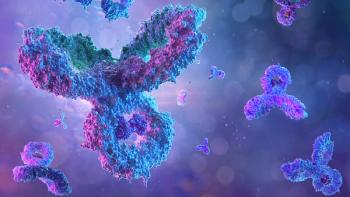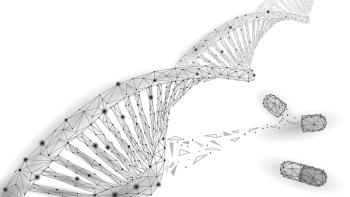
Positive Early Data Seen in COVID-19 Monoclonal Antibody Treatment
The next-generation monoclonal antibody could potentially be used to prevent and treat active COVID-19 infections, according to its developer, providing a non-vaccine option.
Biotech company, Invivyd, announced on June 26, 2025 that Phase I/II clinical data for the company’s next-generation monoclonal antibody (mAb), VYD2311, shows promise for use in the prevention and treatment of COVID-19 (1).
Engineered by Invivyd’s proprietary integrated technology platform, VYD2311is designed to generate an antibody that will neutralize contemporary virus lineages. It is the third mAb from the company to undergo randomized clinical trial evaluation while retaining a near-identical molecular structure and target binding site on the SARS-CoV-2 spike protein and provide a non-vaccine option for preventing and treating COVID-19 (1).
Building on other mAbs
The new mAB uses the same “backbone” as the company’s investigational mAb, pemivibart, which was granted emergency use authorization by FDA (2) in the United States for pre-exposure prophylaxis of symptomatic COVID-19 in certain immunocompromised patients. It also builds on adintrevimab, the company’s other investigational mAb for COVID-19 prevention and treatment, which has a robust safety data package and has demonstrated positive results in Phase II/III clinical trials.
VYD2311 is more than 99% structurally identical to adintrevimab and pemivibart, resulting from a technologically enabled, directed change in antibody sequence and spike protein target engagement uniquely accessible via Invivyd’s technology platform (1). These molecular changes create an increase in in vitro potency and a differentiated resistance profile compared with pemivibart. The pharmacokinetic profile and antiviral potency of VYD2311 may deliver clinically meaningful titer levels through intramuscular administration, according to the company.
A look at the data
Data from a randomized, double-blind, first-in-human Phase I/II clinical trial showed serum concentrations of VYD2311 remained high at six months following a single dose, with an observed half-life of the intramuscularly dose route having the longest duration at 76 days (1). The trial included 40 subjects dosed across multiple routes of administration (ROAs) (intravenously, intramuscularly, and subcutaneously) and different dose levels for a single dose in four cohorts of 10 participants each, randomized 8:2 to receive drug or placebo.
“This range of ROAs and doses was tested to provide maximum flexibility in designing registrational pathways for both COVID-19 prophylaxis and treatment, while retaining a high barrier to resistance in the form of doses expected to accommodate significant evolutionary changes in SARS-CoV-2 viruses,” the company stated in a press release (1).
VYD2311 was well tolerated and had mild to moderate adverse events that were determined to be unrelated to the drug or as expected (1). These included injection site erythema, injection site pain, injection site swelling, headache, dizziness, and infusion-related reactions. The in vivo half-life based on full Phase 1/2 clinical trial data indicated that the long half-life of VYD2311 could mean long-term protection from symptomatic disease, potentially over multiple quarters. According to Invivyd, this is more durable than a COVID-19 vaccine. High dose IV administration may also provide long-term follow-up viral suppression.
“These data reinforce our confidence in VYD2311’s potential to offer a highly effective, scalable, convenient, and accessible solution for COVID-19 prevention,”
“The release of these VYD2311 data represent a critical moment in our mission to modernize infectious disease protection through direct monoclonal antibody prophylaxis,” Marc Elia, chairperson of the Board at Invivyd, said in the release. “The central scientific challenge associated with developing SARS-CoV-2 mAbs is the virus’ continuous evolution. We designed Invivyd to solve this challenge not just by making best-in-class durable antibodies, but also by committing to serial iteration of those antibodies with minimal structural change so that viral evolution can be accommodated with rapid mAb development and authorization, while improving product profile whenever possible. Our proposed approach resembles the technological and regulatory approach long used for vaccines, but rather than delivering pieces of pathogen in vaccine form with its associated challenges, we propose to offer the natural, high efficacy benefit of mAb technology with a similar regulatory framework, leveraging surrogate endpoints based on clinical wisdom and common sense, all for the benefit of Americans in need. We are looking forward to discussing with the new FDA our next steps for providing gold standard options to prevent and treat SARS-CoV-2 infection.”
Non-vaccine COVID-19 treatments necessary?
Non-vaccine COVID-19 treatments may be necessary in the future as the Trump administration continues to revamp its immunization policy. In June 2025, Robert F. Kennedy Jr., secretary of Health and Human Services, dismantled the Advisory Committee on Immunization Practices in the Centers for Disease Control and Prevention (3). The committee provides evidence-based recommendations on vaccine use in children and adults,informs decisions about insurance coverage, and helps determine eligibility for publicly funded programs. The reasons given for the drastic move were the need to strengthen the public’s confidence in vaccine science. However, that reasoning received push back from medical and scientific groups, with the American Medical Association saying the decision undermined such trust and a process that has saved lives. And the Infectious Disease Society of America called the reasoning for the cuts “completely unfounded” (4, 5).
References
- Invivyd. Invivyd Announces Positive Full Phase 1/2 Clinical Data for VYD2311, a Next Generation COVID-19 Monoclonal Antibody for Potential Use as a Non-Vaccine Preventative and for Treatment of Active Infection. Press Release. June 26, 2025.
https://investors.invivyd.com/news-releases/news-release-details/invivyd-announces-positive-full-phase-12-clinical-data-vyd2311 - Invivyd. Invivyd Announces FDA Authorization for Emergency Use of PEMGARDA™ (Formerly VYD222) for Pre-exposure Prophylaxis (PrEP) of COVID-19. Press Release. March 22, 2024.
https://investors.invivyd.com/news-releases/news-release-details/invivyd-announces-fda-authorization-emergency-use-pemgardatm - Cole, C. Implications of RFK Jr.’s CDC Vaccine Committee Overhaul for the Pharmaceutical Industry. PharmTech.com. June 10, 2025.
https://www.biopharminternational.com/view/implications-of-rfk-jrs-cdc-vaccine-committee-overhaul-for-the-pharmaceutical-industry - American Medical Association.
AMA Statement on Advisory Committee on Immunization Practices . Press Release. June 9, 2025. - Infectious Diseases Society of America.
Statement on the Advisory Committee on Immunization Practices. Press Release . June 9, 2025.
Newsletter
Stay at the forefront of biopharmaceutical innovation—subscribe to BioPharm International for expert insights on drug development, manufacturing, compliance, and more.





